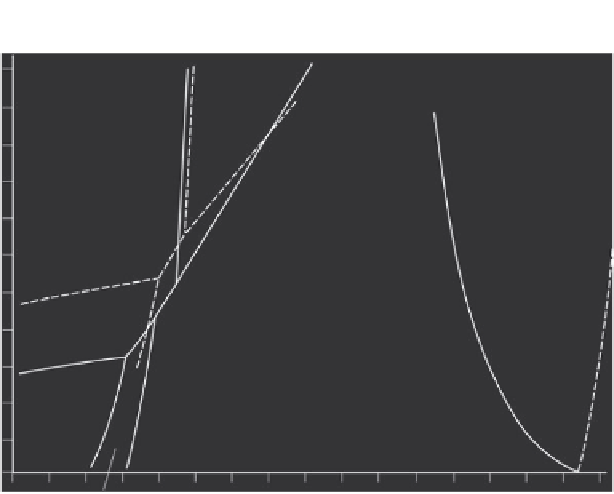Chemistry Reference
In-Depth Information
P
H
2
O
kb
zoisite
+ kyanite
+ quartz
10
lawsonite
+ quartz
liquid
anorthite
+ quartz
5
laumontite
0
0
500
1000
1500
T°C
wairakite
Figure 3.4
Stability of anorthite equilibria anorthite - laumontite - lawsonite - zoisite
+
kyanite: solid line from Newton and Kennedy (1963), dotted line from Craw-
ford and Fyfe (1965) and Perkins et al. (1980).
Calcic plagioclase of some lavas is converted into albite by oceanic hydro-
thermal metamorphism (such rocks were previously called “spilites” and
“keratophyres”). This phenomenon also occurs in some continental lavas.
Metamorphic rocks
Albite, calcic plagioclases and the minerals that replace them at low tem-
perature and high pressure are index minerals of the metamorphic facies.
Albite and plagioclase are absent from the low temperature and high
pressure/(water pressure) metamorphic facies. Albite appears in the green-
schist facies, epidote-amphibolite facies and part of blueschist facies. Calcic
plagioclase is absent from these facies, being replaced by (iron-poor) epi-
dote. Calcic plagioclases are characteristic of amphibolite facies and granu-
lite facies.
In metamorphic rocks, plagioclase often shows a reverse zoning with
a border more calcic than the core: in prograde metamorphism, the cal-
cic plagioclase gradually becomes progressively stable as the temperature
increases. Plagioclase of metamorphic rocks that are not of igneous origin,
commonly remains without twinning.





























